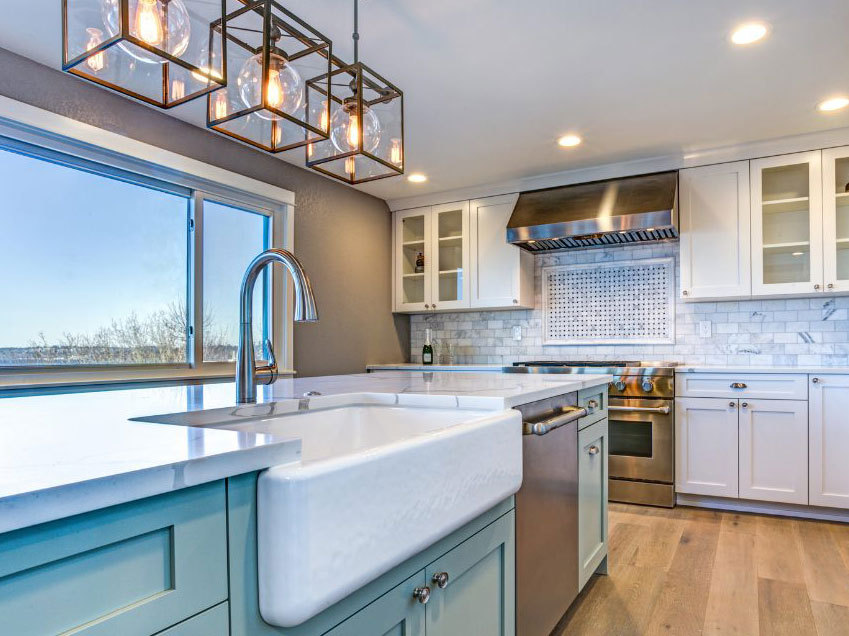Redesign Your Culinary Area: The Ultimate Guide to Kitchen Renovations

Have you been dreaming of a kitchen that beautifully combines aesthetic, functionality, and effectiveness? Renovating your kitchen can change your cooking environment into a haven for preparing meals, hosting gatherings, and family gatherings. If you are looking to revamp an old room or simply renew your kitchen's look, this definitive guide will equip you with all the knowledge you need to handle the renovation process with confidence.
Starting with identifying the indicators that indicate it’s time to a redesign to examining the latest design trends for 2024, we will explore each detail of kitchen renovations. We will cover how to prepare efficiently, budget carefully, and avoid common mistakes while offering inspiration for styles that resonate with your unique preferences. If you are a home improvement lover or thinking about employing a professional, our expert tips will help you make informed decisions that lead to a kitchen space that is not only gorgeous but also matches your way of living perfectly.
Organizing Your Kitchen Renovation
Once you start a kitchen renovation, the key lies in success lies in thorough planning. Begin by assessing the current kitchen layout and noting what works and what isn’t functional. Consider your cooking habits, storage needs, and how you use the space. Make a list of must-haves and desirable elements, which will assist in ranking your renovation goals. Consulting with family members can additionally provide different perspectives and needs that must be considered during the renovation.
Budgeting is another crucial element of the planning phase. Set kitchen design consultation that encompasses all aspects of the renovation, including materials, labor, and surprise expenses. Investigate potential costs for various elements such as countertops, cabinetry, and appliances. If you are working with a limited budget, explore options for affordable strategies, such as remodeling cabinets or selecting economical finishes. Creating a financial framework will help you in taking informed decisions throughout the renovation process.
Lastly, create a timeline for your renovation project. The length of time required for different tasks, like demolition or installation, can differ greatly, so it is important to map out each phase of the renovation. Include lead times for ordering materials and appliances, as well as potential delays. Setting up a timeline will not only keep the project on track but also aid align expectations for when your new kitchen will be ready for use.
Kitchen Design & Styles
As you embark on your kitchen renovation journey, drawing inspiration from current design trends can greatly enhance your environment. In 2024, a sweeping trend is the integration of organic elements and earthy tones, creating a inviting and serene atmosphere. Imagine deep wood finishes, stone countertops, and earthy color palettes that reflect the aesthetics of nature. This approach not only encourages a sense of peace but also guarantees your kitchen feels enduringly stylish.
A further trend is the emphasis on multifuctionality in kitchen design. With an ever more busy lifestyle, homeowners are seeking ways to maximize their kitchens for cooking, entertaining, and even working from home. Open-concept layouts that seamlessly blend the kitchen with living spaces allow for greater interaction while innovative storage solutions like slide-out shelves and hidden cabinets maintain the area clutter-free. Small kitchens can especially benefit from these space-saving designs, proving that functionality can exist in aesthetics.
Adopting a timeless aesthetic remains essential for many homeowners. Traditional elements such as shaker-style cabinets, brass fixtures, and subway tile backsplashes offer lasting appeal that transcends fleeting trends. Meanwhile, customizing elements like backsplashes or statement lighting fixtures can add personal flair without compromising on durability. The key is to create a harmonious design that shows your individuality while ensuring practicality for the long term to come.

Requirements for a Functional Kitchen
A well-designed kitchen is crafted to improve productivity while providing a comfortable space for meal preparation and entertaining. One of the key components is efficient storage, which helps avoid clutter and keeps essential items within reach. Commit in cabinetry that optimizes space and consider innovative storage solutions like pull-out shelves and drawer dividers. This organization not only boosts workflow but also creates a seamless aesthetic.
Another important factor is good lighting. A bright kitchen enhances visibility and makes cooking a joy rather than a chore. Layered lighting, including ambient, task, and decorative lights, can create a inviting atmosphere. Consider under-cabinet lighting to illuminate work areas and decorative pendant lights over islands to introduce style. Sufficient lighting can truly transform the effectiveness of the space.
Finally, selecting high-quality appliances and fixtures is crucial for a practical kitchen. Energy-efficient appliances reduce expenses and carbon footprint, while fixtures like faucets and sinks should be both functional and stylish. Choosing the right stove and refrigerator suited to your cooking habits will enhance your kitchen's efficiency. By focusing on these fundamentals, you can create a combination of style and functionality in your culinary space.
